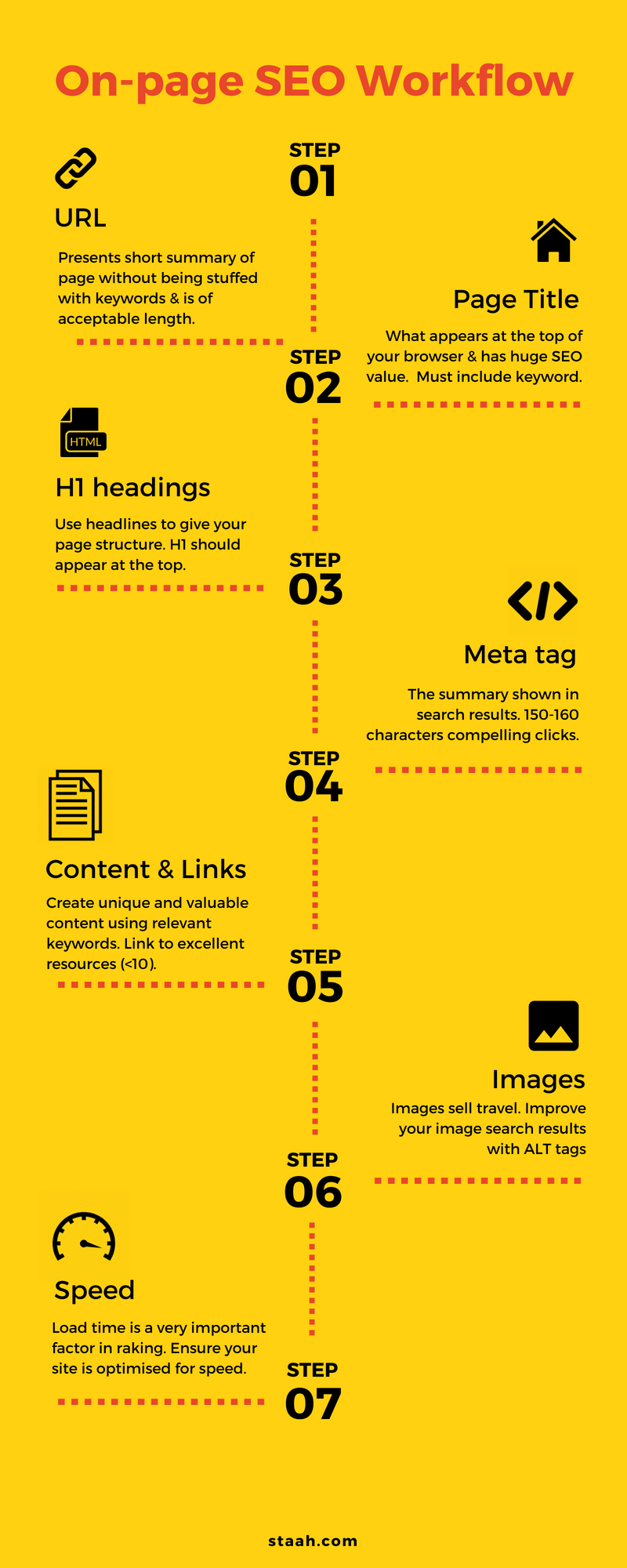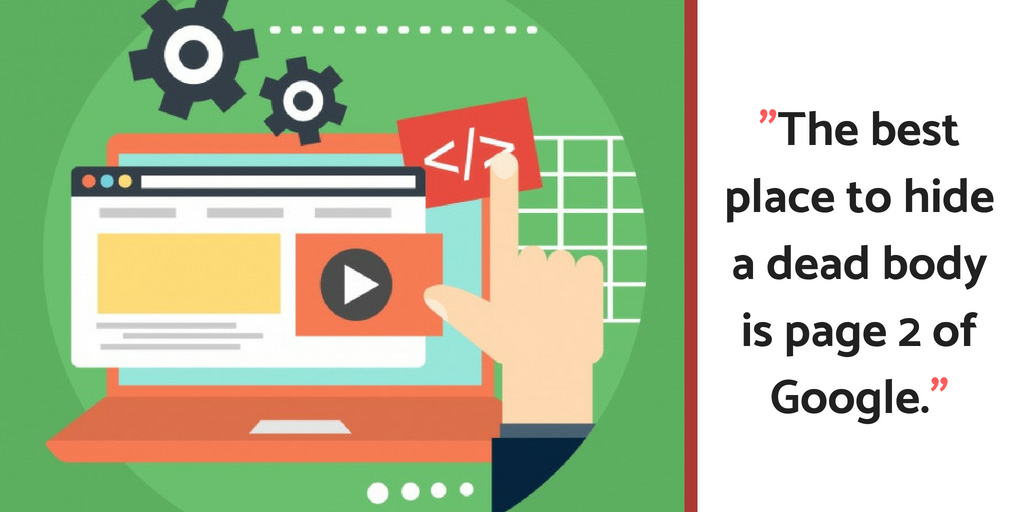So, you’ve spent hours creating great content. It is getting social engagement but something isn’t right. Your rankings are still not improving! What can you do? Look at your on-page SEO. Are you giving the search engine the right indicators?
Let’s first look at a workflow for on-page optimisation. Next, we will look at practical tips you can use your site to impress users as well as search engines.
On-page SEO is all about creating or enhancing relevancy signals for a webpage with respect to the search query. Here is an on-page workflow that will help you improve these signals.

Essential tips to get you on the road to SEO success
-
- Pay great attention to your title tag or page title. Keep your keyword close to the beginning of the title for more weight with search engines.
- Add modifiers to your page title such as review, guide, 2018 etc. for user and search engine ease.
- Give your page title the love it deserves by wrapping it in an H1 tag. Most modern content management systems such as STAAH’s website builder and WordPress do this for you. Wrap your subheadings in H2, H3, H4 tags to give your page a structure.
- Add sensible URLs. They should be short and provide a summary of the page to user so they know if the page will fulfill their needs without opening it in their browser.
- Use engaging media – videos, images, infographics … these are all great to attract and retain a user. Higher time spent on site and lower bounce rates are also indicators for search engines on the quality of content.
-

Engaging photos are a great storytelling tool.
- Create great content. It should be unique (definitely not duplicate web content) and of value to the user. Adding rich content as mentioned above enhances your content. Keep readability in mind when creating your page. Use formatting. A big dump of text will not keep users on site and affect your ranking.
- Use your target keywords within the first 100 words of your web page copy. Then sprinkle the remaining page with synonyms of these keywords. Don’t stuff keywords. Think of a user first, then the search engine.
- When it comes to length, a Backlinko study found that long form content tends to rank better. Use more words; as long as the content is relevant and engaging, users will read and the search engine will rank.
- Optimise your images using ALT tags. The tags should contain your target keywords. This will greatly improve your image search.
- Use links to resources that will add value to your users in context of the content they are looking at. This includes – and must have – outbound links. It is a relevancy signal that helps the search engine figure out your topic. Use about 2 -3 internal links on the page.
- Responsive design. If your website is not mobile friendly, Google will penalise it.
- Improve site speed. A MunchWeb study found that 75% of users don’t visit a website that takes longer than 4 seconds to load.
- Use social media icons on page to encourage users to share. More the shares and engagement on a piece of content, the better it ranks.
We’re now midway in our SEO series. How are you liking it so far? What else would you like to know? Email us at marketing@staah.com.

